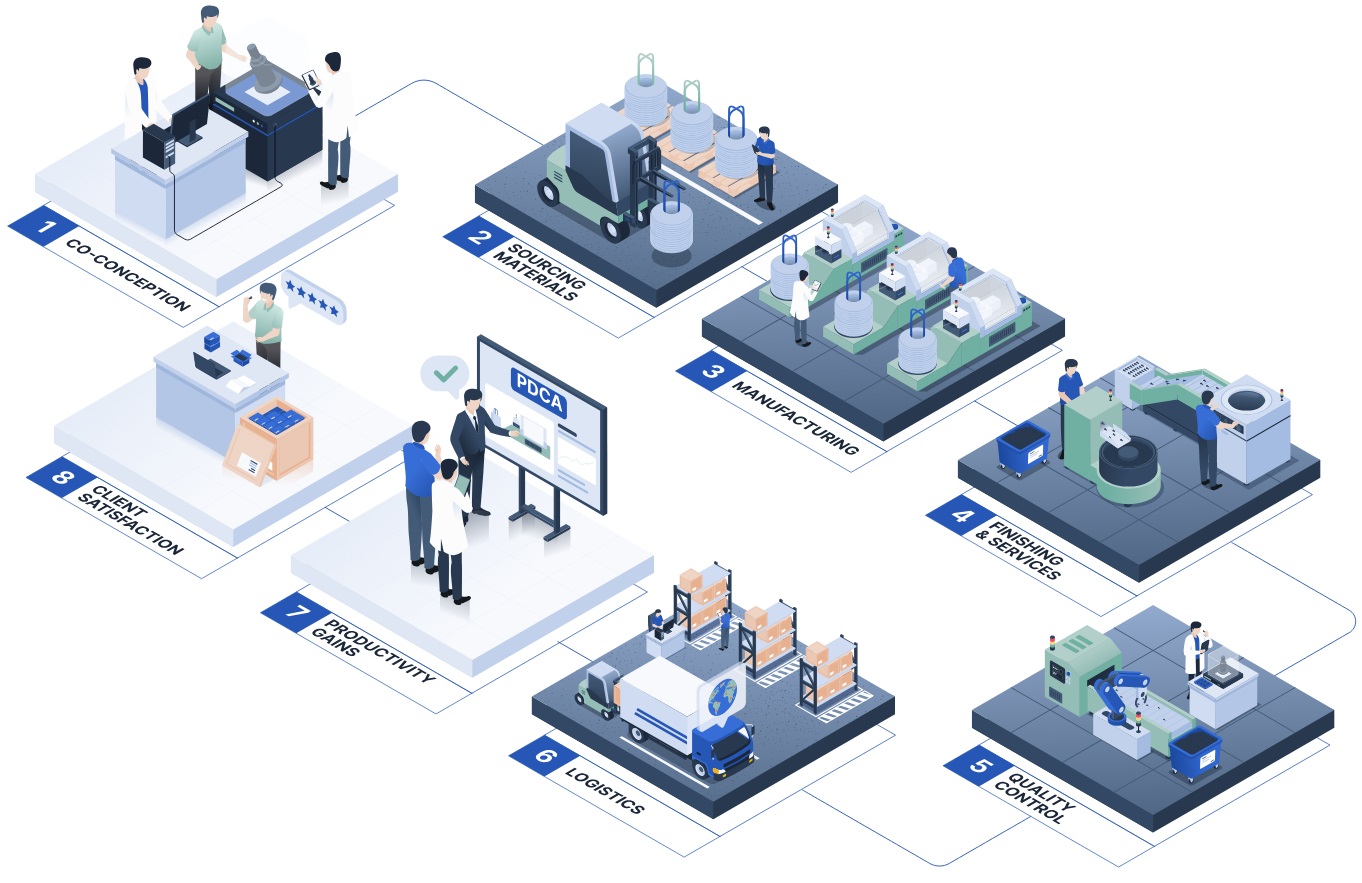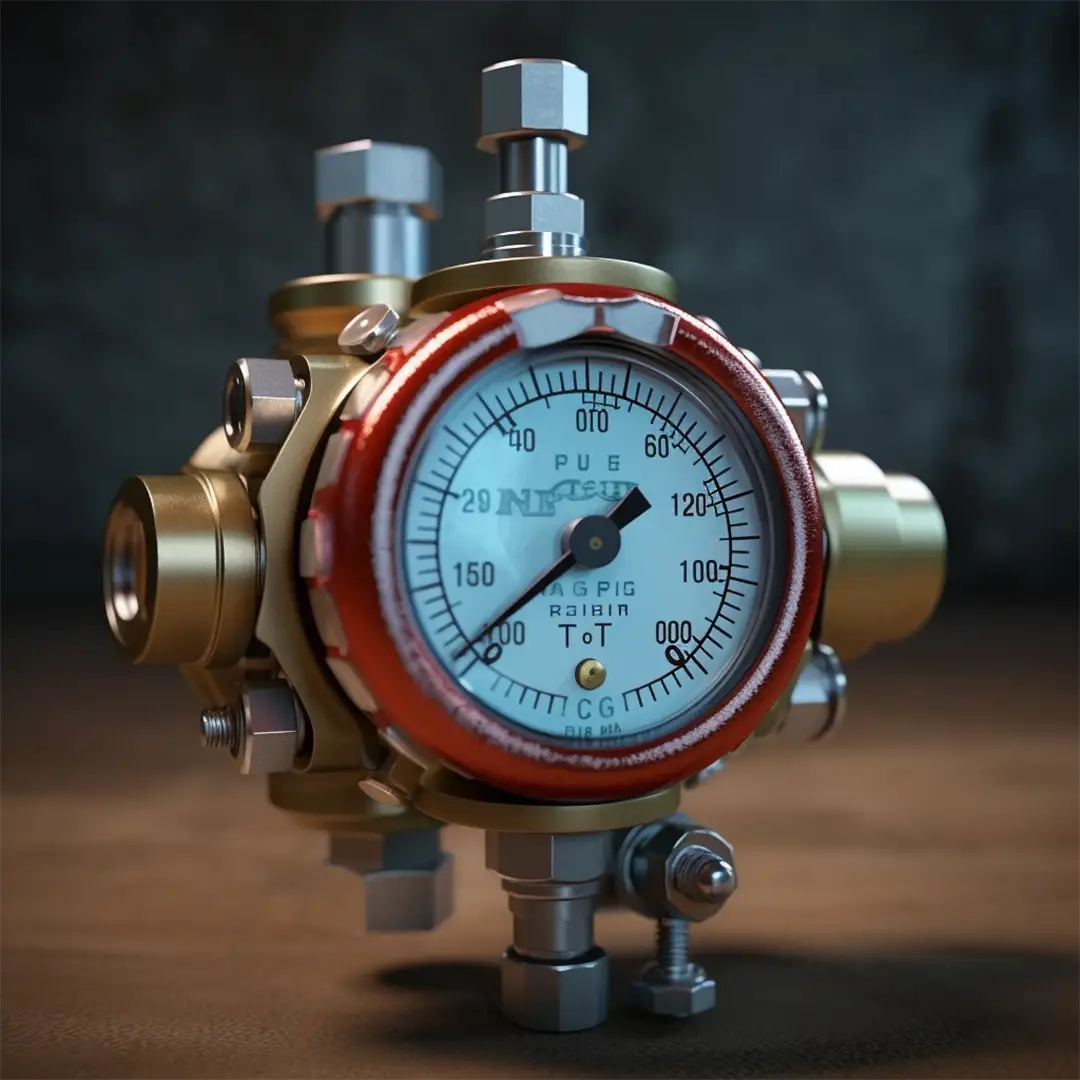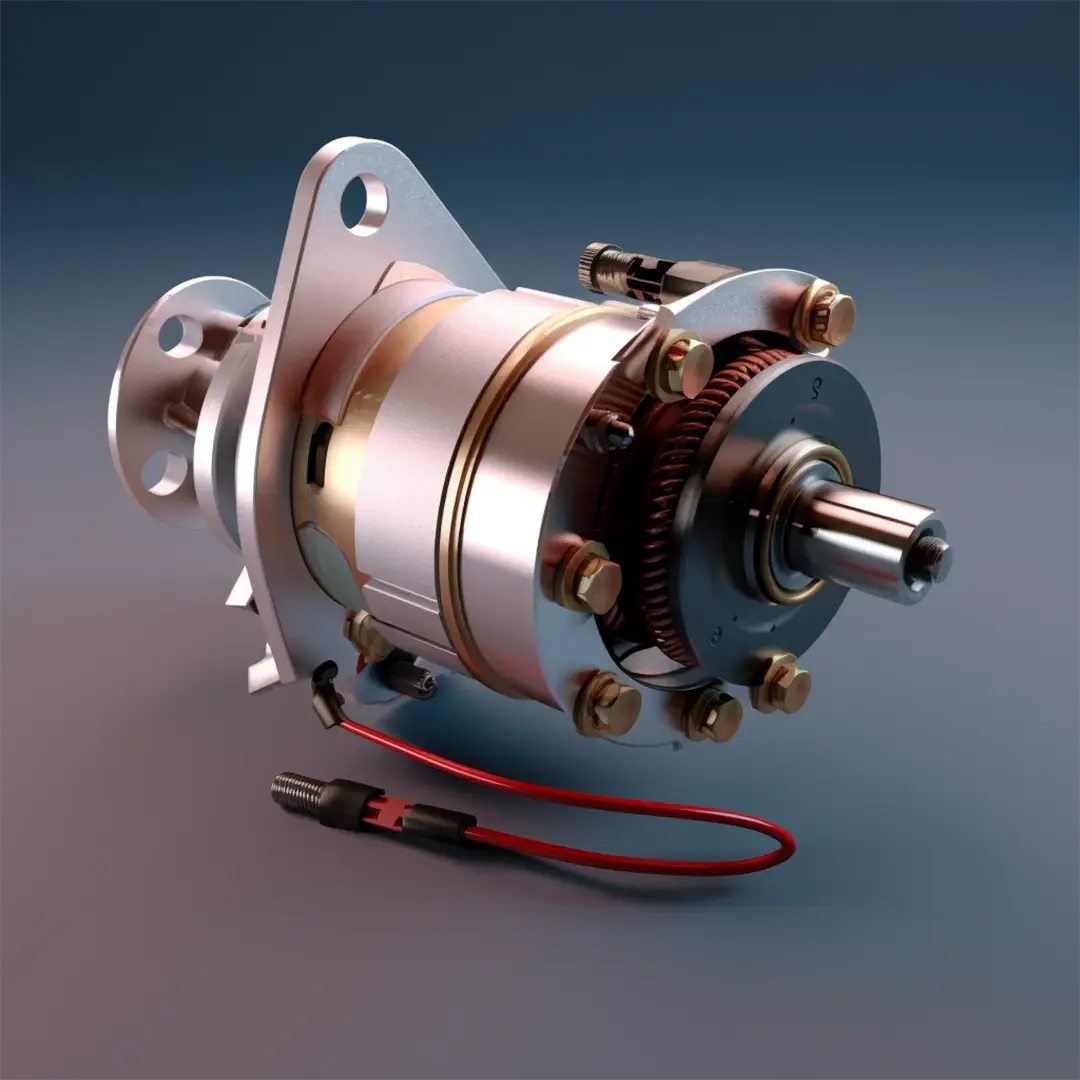2, rue de la Ternière
Avrille Cedex FRANCE
- 35 million sockets designed per year
- Co-designer of custom fasteners for 100 years and manufacturer of standard products
- From M6 to M10 and from 8 mm to 30 mm (internal diameter adapted to the passage of a screw)
- Steel, stainless steel, brass, etc. (other materials are available on request).
A spacer makes it possible to create space, position several elements or protect the integrity of an assembly by limiting the compression load exerted.
Custom spacer - Cylindrical spacer - Custom socket
Custom spacer - Cylindrical spacer - Custom socket

- Feasibility control using the FMEA tool, which is used to analyze failure modes, their effects and their criticality.

- Manufacture of initial samples in medium series, and validation of production with PPAP according to the IATF 16949 standard.

- Development of detailed production processes according to the APQP quality process

- Collection and analysis of production data to identify trends and variations. 3PPM in 2023.
The advantages of LGC Industries manufacturing


.png)

.png)


- 24 Multi-spindle lathes
- 45 Spins Escomatic
- 42 Fluting machines
- 8 Plunge and thread grinding machines
Learn more about the technical characteristics of our products
Discover other products
What is a spacer?
A spacer is a rigid, cylindrical element, often made of steel, that is used to connect and hold two other parts at a fixed distance.
This component is commonly used in mechanical assemblies to create space or maintain a precise distance between several elements.
What is a socket?
A socket is a highly precise mechanical part that makes it possible to connect two parts, possibly mobile, to be connected by creating a fastener that:
- Reduces assembly weight
- Eliminates friction between rooms
Bushings are found in car engines or suspensions and are used to:
- Position or center several elements in an assembly, called a centering socket.
- Protect the integrity of the assembly by limiting the compression load exerted, called compression sleeve.
These components are often made of metal or plastic and take the form of tubes or hollow cylinders. Sockets are particularly distinguished by their usefulness in applications requiring weight reduction.
For example, the use of plain sockets reduces the consumption of expensive antifriction materials and simplifies repairs, thus reducing the costs of installing and replacing worn sockets with new ones.
What is the difference between a spacer and a socket?
At first glance, the sockets and spacers appear to be the same. The major difference is the role of each piece.
The purpose of a spacer is to create space between two rooms. In English, “spacing” means creating and maintaining space.
The main application of a spacer is found in rotation systems such as ball bearings (bicycle hubs, gearboxes, etc.). It creates space between the bearings to keep them in a fixed position.
The name of the socket is more significant than that of the spacer, because it has several specialized roles. A cylindrical socket is not a smooth socket, but rather a centering or positioning socket, underlining its crucial role in assembly or alignment operations.
This is not a simple language error, but a lack of understanding of the various functions of a socket. It is common to confuse these terms, but it is crucial to recognize the importance of sockets in more precise applications than spacers.
The different types of sockets and spacers
Like other fasteners, there are a variety of sockets and spacers.
- La rectified centering socket /rectified centering spacer: for precise alignment of two holes, ensuring perfect centering and alignment in a mechanical assembly.
- La compression sleeve /compression spacer, also called spacer: maintains a gap between two parts.
- La threaded socket - threaded/threaded spacer - threaded, also called threaded insert: the inner diameter is suitable for the passage of a screw and the outer diameter ensures a perfect fit.
Spacers play a crucial role in maintaining the integrity of plastic part assemblies by protecting them from compression stresses. Their overmolding prevents unwanted deformations and compensates for dimensional variations caused by thermal shocks.
Would you like to know more about our spacers?
Go to our dedicated article: All you need to know about spacers






















